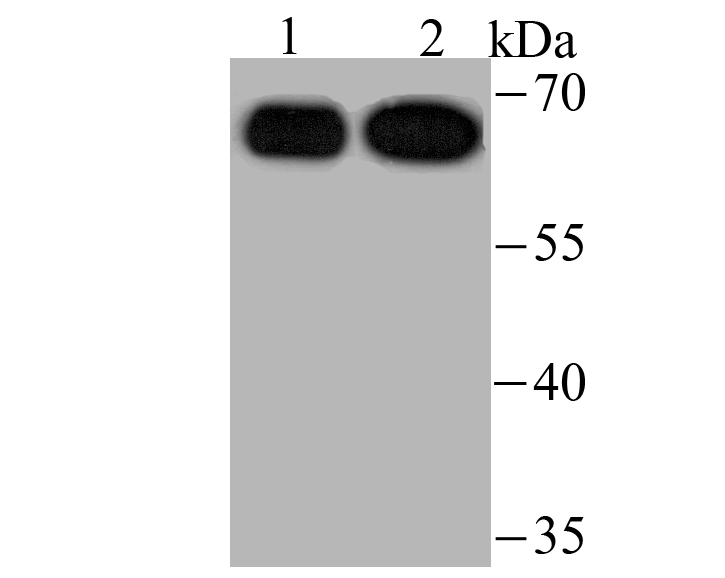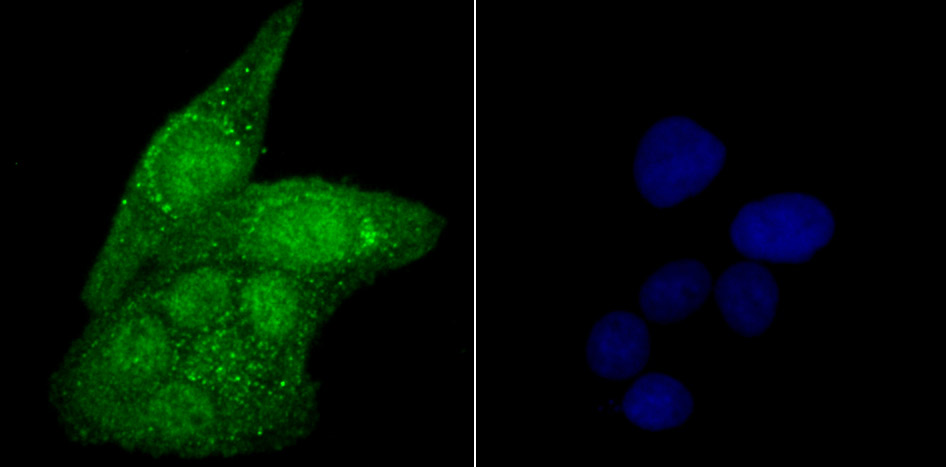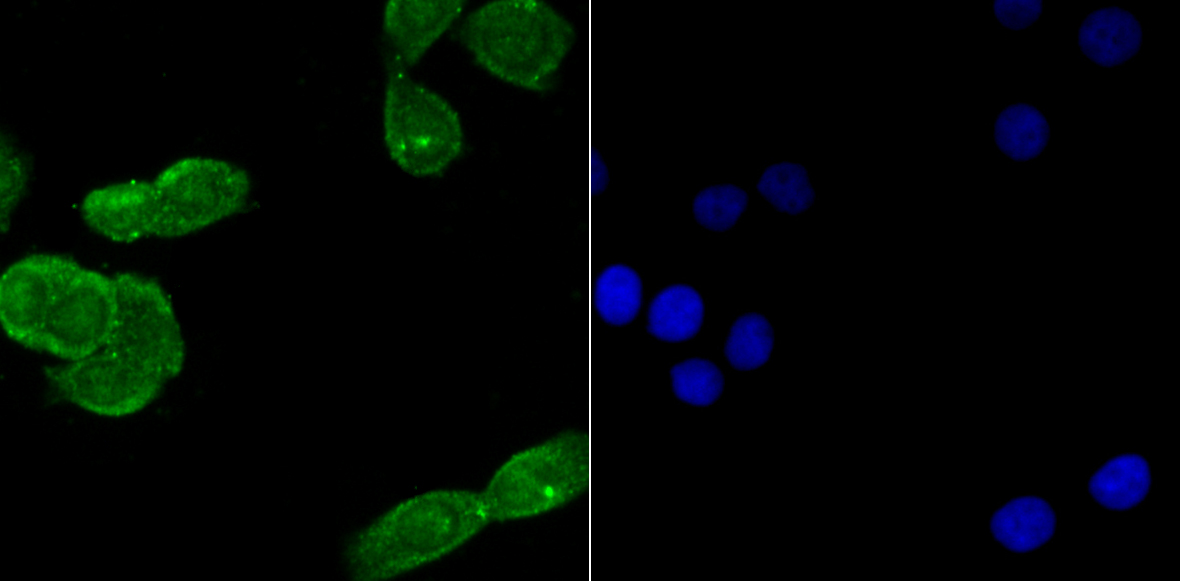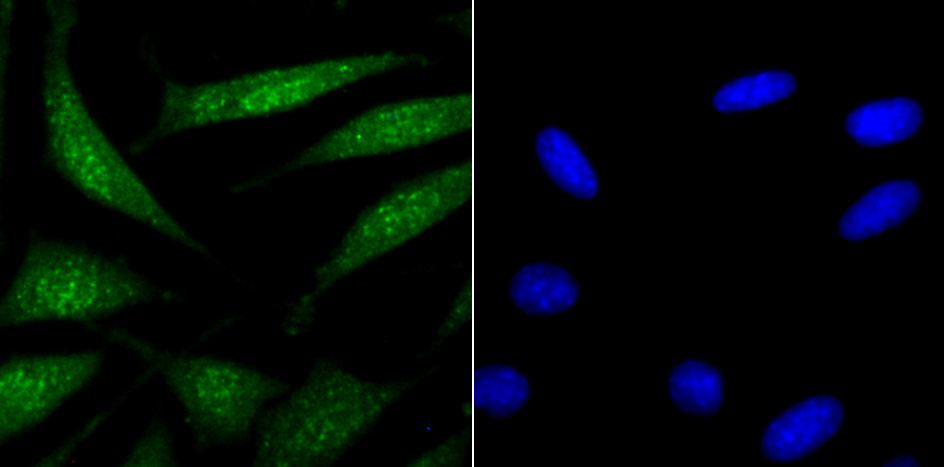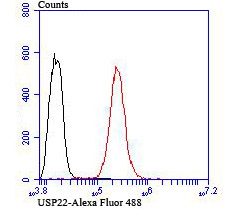The ubiquitin (Ub) pathway involves three sequential enzymatic steps that facilitate the conjugation of Ub and Ub-like molecules to specific protein substrates. Through the use of a wide range of enzymes that can add or remove ubiquitin, the Ub pathway controls many intracellular processes such as signal transduction, transcriptional activation and cell cycle progression. USP22 (ubiquitin specific peptidase 22), also known as USP3L, is a 525 amino acid protein that contains one UBP-type zinc finger and functions to catalyze the conversion of a ubiquitin C-terminal thioester to free ubiquitin and thiol, a reaction that may influence several cellular processes. Via its catalytic activity, USP22 is thought to play an important role in cell cycle progression and may also serve as a cancer stem cell marker. The gene encoding USP22 maps to human chromosome 17, which comprises over 2.5% of the human genome and encodes over 1,200 genes.

